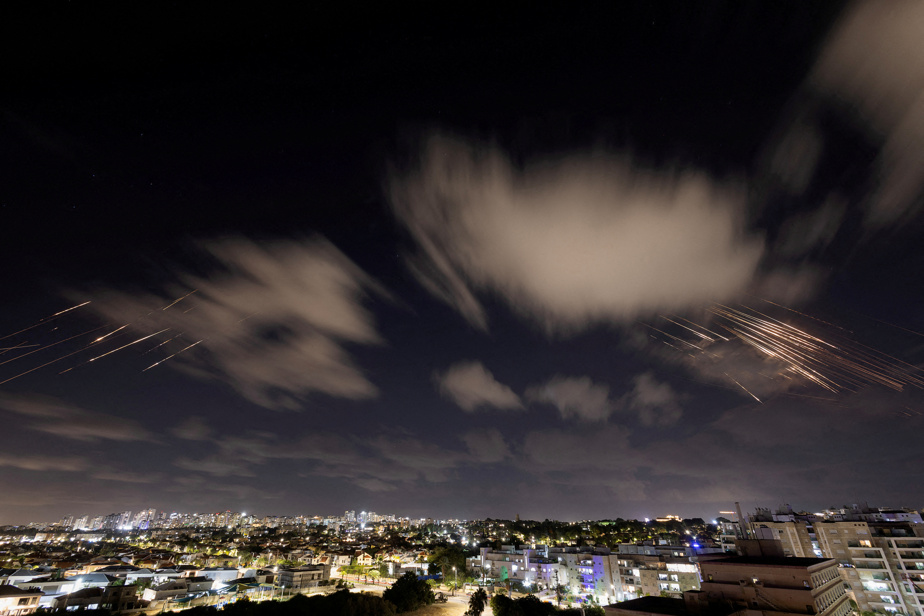Do the missiles fired by Iran into Israeli territory on Tuesday herald the start of a total war in the Middle East? While many questions still remain unanswered, the experts consulted by The Press are categorical: the region is entering “a very high risk zone”, which heralds new human tragedies.
Are we on the verge of an even stronger war?
Not yet, but the chances are certainly increasing today, says Middle East conflict specialist and retired professor Rachad Antonius.
It is not yet clear whether Israel wants all-out war against Iran, and vice versa. I think even decision-makers don’t really know yet. But the tension is sure to rise. We are currently in a very high risk zone.
Rachad Antonius, specialist in conflicts in the Middle East and retired professor
According to him, the Iranian regime probably felt “compelled to show its allies, but also Israel, that it was able to retaliate” after the assassinations of the leaders of Lebanese Hezbollah and Palestinian Hamas in recent years. weeks.
What does that change in the current conflict?
In the very short term, “it especially slows down the peace process” between Hamas and Israel, says the director of the Canadian Observatory on Humanitarian Crises and Action at UQAM, François Audet.
“It puts even more sand in the fragile gears of the talks for a truce, where an important interlocutor which is Iran will now be missing,” he persists, deploring that the efforts of American President Joe Biden , who had feared this possibility for several days, “were not enough to calm things down”.
On a humanitarian level, “if Israeli airspace were to become even more fragile, this could break supply chains and further isolate the population,” the expert also fears.
And what is the logical next step?
An Israeli response is acquired in the context, initially, affirms the expert on issues related to the Middle East at Concordia University, Henri Habib.
It can already be very dangerous. Afterwards, yes, it could cause a general war. And that could lead us to a world war, especially if America and Iran start bombing each other. But we’re not there yet.
Henri Habib, expert on Middle East issues at Concordia University
In his eyes, the current tensions between Hamas, Lebanon, Iran and Israel can be explained by “the lack of a leader” on the international scene. “The people, on both sides, are fed up. But no one is standing up to put an end to all this. »
When did Iran-Israel tensions begin?
The two regimes have been in opposition for a while now. In fact, Tehran has been engaged in a war with Israel for almost 50 years that was until now “by proxy”, in other words without direct confrontation.
However, all this changed on the night of April 13 to 14, when Iran directly attacked Israel for the very first time in its history, by firing some 350 explosive drones and missiles.
That night, the Iranian regime – which until then had relied on its “axis of resistance” allies in Lebanon, Yemen, Iraq and Syria – “managed to change the rules of the game,” observed Raz Zimmt, a researcher at the Institute for National Security Studies at Tel Aviv University, at the time.
What will be the impact on Lebanon?
For Rachad Antonius, it is clear that Israel “remains ready to go very far in the confrontation” with regard to Lebanon, where the Netanyahu regime has already carried out several offensives targeting members of Hezbollah in recent days.
“They want to completely empty southern Lebanon, they are determined. For me, that doesn’t change any of that,” says the professor on this subject. His colleague François Audet believes that Iranian involvement could ultimately have an impact.
“Tehran has until now acted as an intermediary with Hezbollah, but by making a direct response, they are taking a stand, a political commitment in the current conflict. It is, on a symbolic level, very important,” he concludes.
500 million
This is the approximate number of people residing in the Middle East and North Africa (MENA) region, which includes Iran, Israel and Lebanon, among others, as of 2023, according to data from the World Bank. The figure has been on a strong upward trend for several decades.
